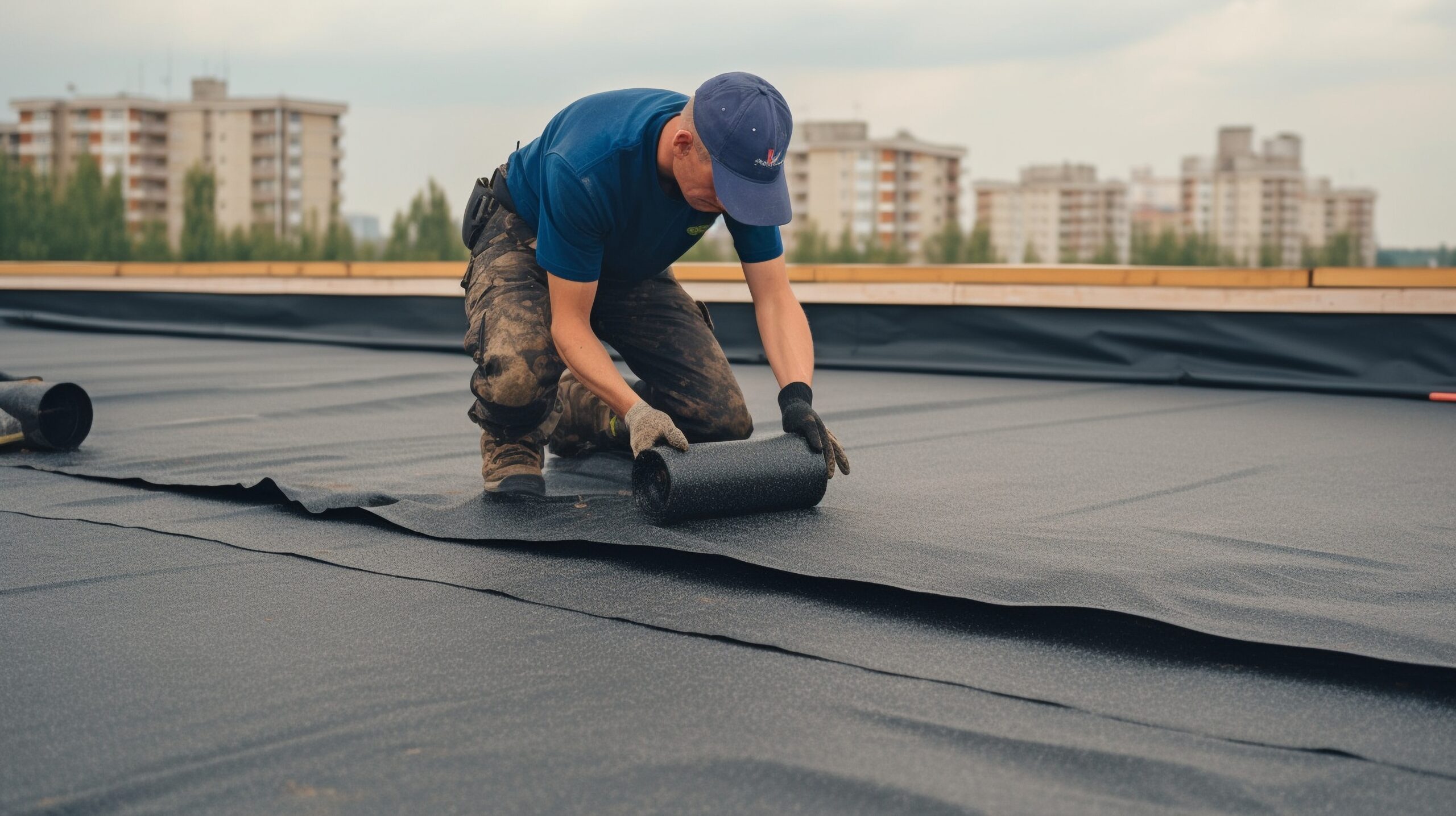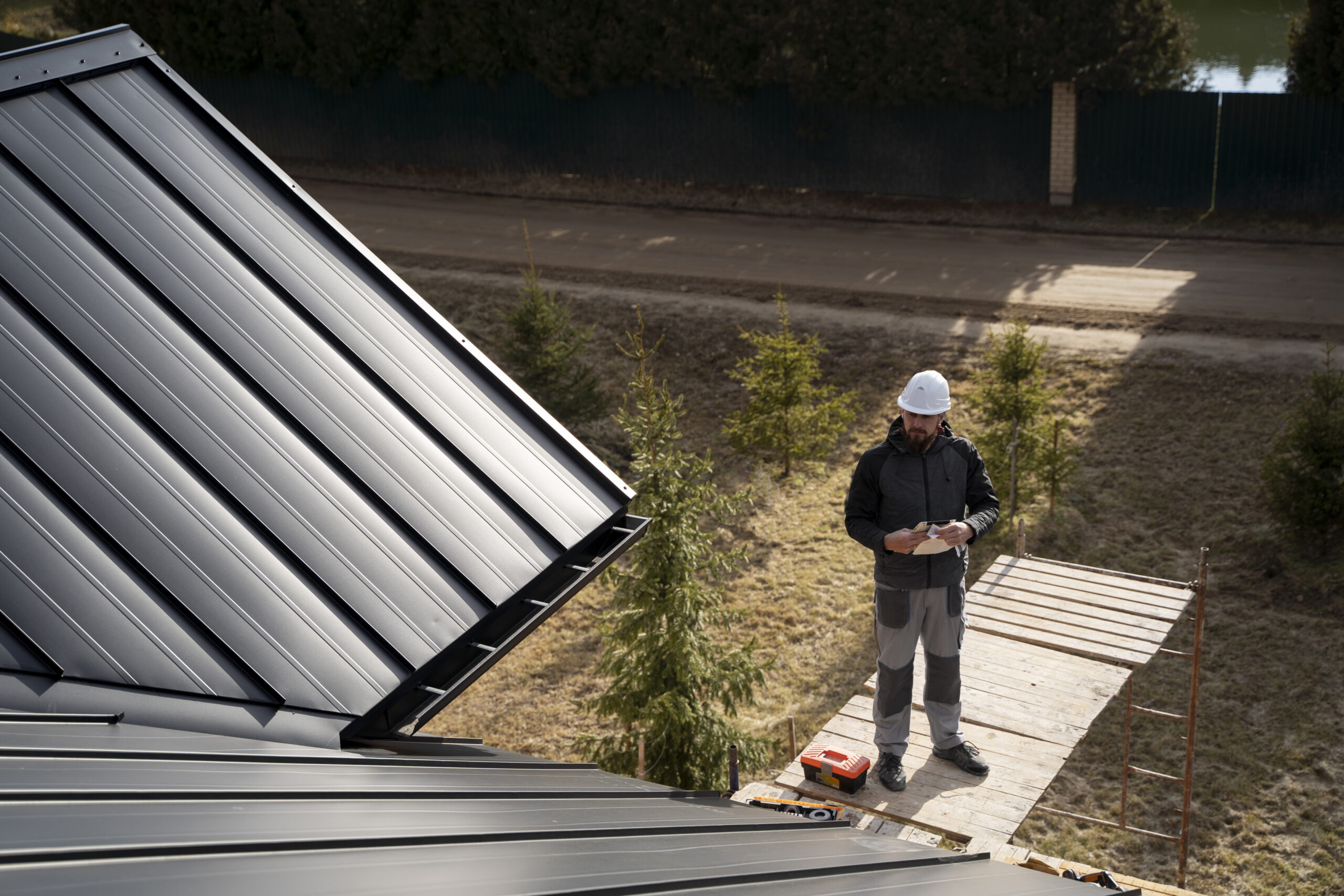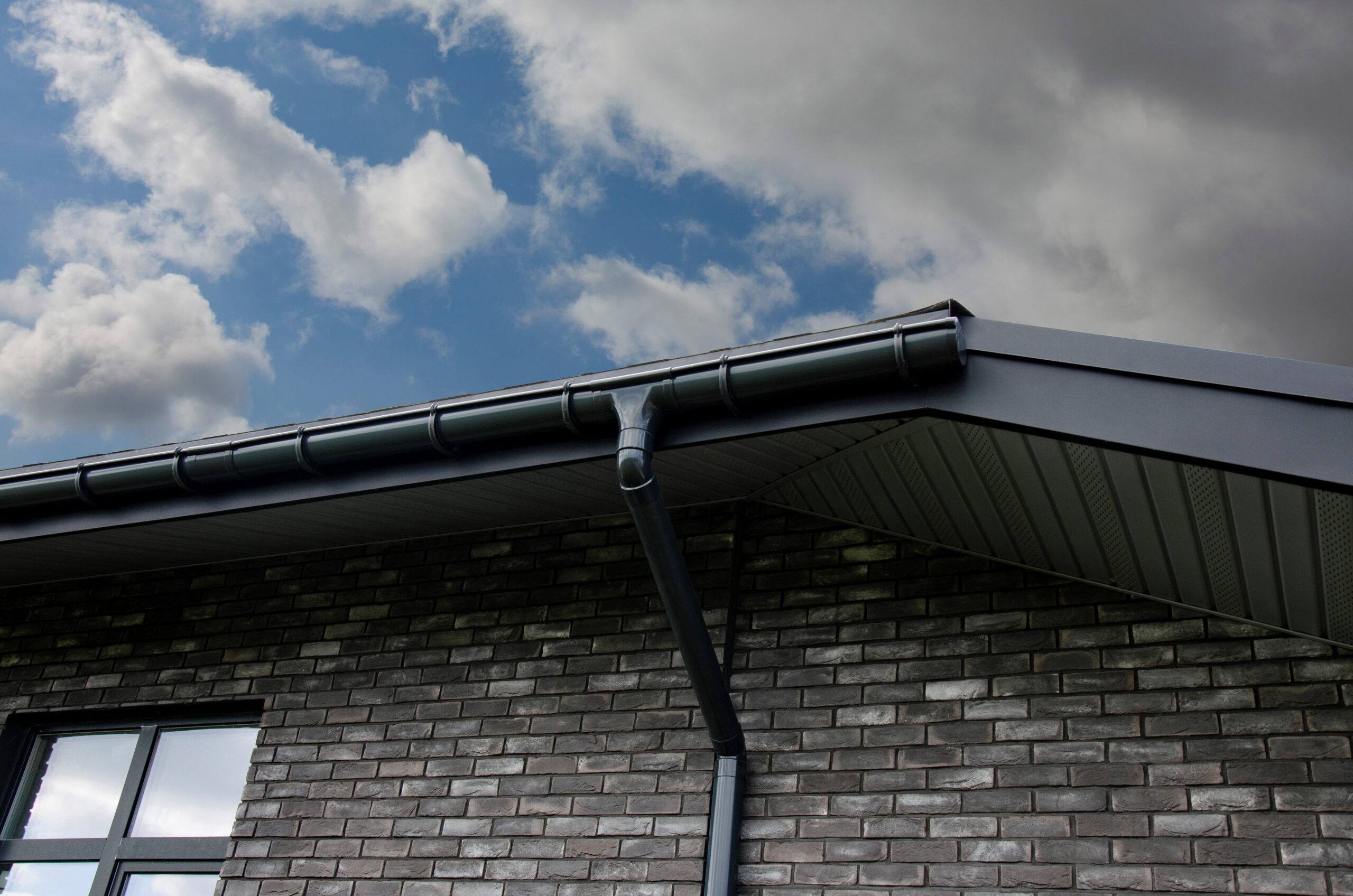Choosing the right roof for a building is a major decision that can significantly impact its aesthetics, functionality, and long-term value. Among the most popular options are flat roofs and pitched roofs, each offering distinct features and benefits tailored to various needs.
This article will look at the differences between these two roofing types, focusing on key factors such as cost, maintenance, drainage, usable space, and repair complexity. By understanding these differences, homeowners, business owners, and property developers can make informed choices that best suit their projects and preferences.
What is a Flat Roof?

A flat roof is characterised by its minimal slope, allowing for a nearly level surface. This design is often employed in modern architectural styles and is particularly common in commercial buildings.
Flat roofs typically use materials such as rubber, asphalt, or PVC, which provide a waterproof barrier. While they may seem simplistic, flat roofs can offer excellent durability when properly maintained. Generally, their lifespan ranges from 10 to 30 years, depending on the materials used and the quality of installation.
What is a Pitched Roof?

A pitched roof features an angled or sloped design, which facilitates natural water drainage. This type of roof is traditionally seen on residential properties, including cottages and family homes.
Common materials used for pitched roofs include tiles, shingles, and slate, each offering distinct aesthetic and functional benefits. Pitched roofs typically have a longer lifespan, often lasting 20 to 50 years, and their design helps prevent water pooling, thereby reducing maintenance needs over time.
Cost
When considering roofing options, installation costs play a significant role in the roof cost comparison. Flat roofs generally have lower initial installation costs compared to pitched roofs due to their simpler design and fewer materials required. However, the long-term cost efficiency can vary. While flat roofs may save money upfront, they often require more frequent maintenance and repairs, particularly if drainage issues arise.
On the other hand, pitched roofs typically incur higher initial costs, reflecting the complexity of installation and the materials used.
However, their longevity and lower maintenance needs can make them more cost-effective in the long run. Factors such as materials, labour, and geographic location also significantly impact the overall cost for both roofing types. For example, in regions where skilled roofing labour is scarce or expensive, pitched roofs may incur additional installation costs due to the expertise required.
Similarly, geographic location can influence the price of materials, particularly if specific types of roofing materials (such as slate or tiles) need to be sourced from distant areas. Weather conditions in certain areas may also demand additional structural reinforcements, which can drive up costs for both flat and pitched roofs.
Maintenance
Maintenance requirements can vary significantly between a flat roof vs pitched roof. Flat roofs necessitate regular upkeep to allow for proper drainage and prevent issues related to pooling water.
This includes routine inspections to clear debris, check drainage systems, and apply waterproofing treatments as needed. Without diligent maintenance, flat roofs can develop leaks and structural problems, which may lead to costly repairs.
Pitched roofs, while generally requiring less frequent maintenance, still need regular inspections to identify potential leaks, damaged tiles, or gutter blockages. Seasonal checks are crucial, particularly after heavy rain or storms, to make sure the roof remains intact. The type of climate can also influence maintenance needs; for instance, areas with heavy snowfall may require additional attention to prevent snow accumulation on both flat and pitched roofs.
Flat roofs, in particular, can face significant challenges in snowy climates, as their limited slope makes them more vulnerable to snow buildup, which can add stress to the roof’s structure.
Pitched roofs, while better suited to snowy conditions due to their slope, may still require frequent checks so that gutters and downspouts remain clear, especially after snowmelt.
Water Drainage

Effective water drainage is a big part of roofing design, and flat roofs and pitched roofs handle this differently.
Flat roofs are designed with a slight slope to facilitate drainage, but they can face challenges such as water pooling. To mitigate these issues, flat roofs often incorporate drainage systems, including gutters and downspouts. However, if not properly maintained, these systems can become blocked, leading to water accumulation that may cause leaks and structural damage.
Pitched roofs benefit from their angled design, which naturally promotes water runoff. The slope allows rain and snow to slide off easily, reducing the risk of standing water. This design typically results in fewer drainage issues and lower maintenance demands. However, it is still essential to make sure that gutters and downpipes are clear and functioning correctly to prevent overflow and potential damage to the roof and building structure.
Understanding the drainage capabilities of each roof type is required for longevity and integrity, as poor drainage can significantly impact a roof’s lifespan and the overall health of a building.
Usable Space
The design of a roof can also influence the amount of usable space it offers. Flat roofs present a unique opportunity for additional living space. They can be transformed into rooftop terraces, gardens, or even leisure areas, adding valuable square footage to a property.
This versatility can improve the overall appeal and functionality of a building, particularly in urban environments where outdoor space is limited. However, there are legal and safety considerations to keep in mind when using flat roof areas, such as building regulations and structural load capacities.
For instance, the weight of soil for rooftop gardens or furnishings for terraces must be considered, as well as adherence to local building codes regarding handrails, access points, and load-bearing limits. Failing to account for these factors can result in structural damage or legal issues down the line.
On the other hand, pitched roofs generally have limitations regarding usable space. While they may provide attic areas that can be converted into additional rooms, the angled design restricts the amount of space available for use.
These attics may require careful planning and construction to make sure they meet building codes and are accessible. Although pitched roofs do not typically offer the same level of usable outdoor space as flat roofs, they can still contribute to the overall value of a property when designed creatively.
Repair Complexity
When it comes to repairs, flat roofs and pitched roofs present different challenges. Flat roofs are prone to specific issues such as leaks and membrane damage, often resulting from standing water or wear and tear over time.
Accessing flat roofs for repairs can be straightforward, but the nature of the repairs may require specialised skills to allow for proper sealing and waterproofing. Additionally, frequent inspections and prompt attention to minor issues can prevent more extensive damage and costly repairs down the line.
Pitched roofs, while typically more durable, can also encounter repair issues such as broken tiles, shingle damage, or gutter maintenance needs. The complexity of accessing a pitched roof can vary based on its height and slope, often necessitating scaffolding or ladders for safe inspection and repairs. This can increase the overall cost and time required for repairs compared to flat roofs.
Both flat roofs and pitched roofs have distinct advantages and disadvantages that cater to different building needs and aesthetics.
Flat roofs offer cost-effective solutions and the potential for additional usable space, but they require diligent maintenance and effective drainage systems. Conversely, pitched roofs provide natural water drainage and longevity, although they come with higher initial costs and limited usable space.
The choice between a flat roof and a pitched roof depends on various factors, including budget, climate, and personal preferences. Homeowners and businesses must weigh these considerations carefully and consult with professionals to determine the best roofing option for their specific projects.
By understanding the differences outlined in this article, property owners can make informed choices that improve the functionality and value of their buildings.
